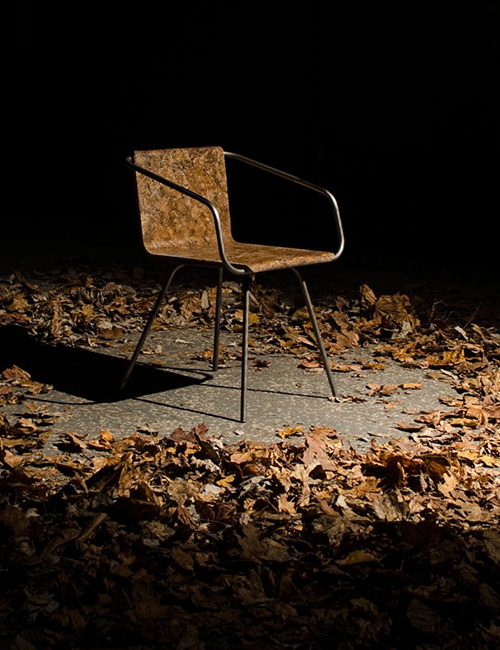Sitting on seagrass, potatoes or leaves? It’s possible with the new biomaterials for producing chairs. Designers are discovering nature as a source of inspiration and are creating classic seating furniture with green criteria.
The chair is one of the most exciting pieces of furniture for designers. As objects of design, seating furniture has always been a medium for innovations – just think of the Bauhaus cantilever chairs or 60s plastic chairs. Their pioneering shapes and materials are often ahead of their time, and they simultaneously reflect social trends. The latest models also clearly bear the traces of these currents in the way in which they emphasise sustainable design.
In their search for materials that conserve resources, designers today are discovering natural materials as a source of inspiration. Apparently superfluous waste products are being processed into raw and recyclable materials for new chair models. Many designers are experimenting with plant and vegetable waste and similar organic debris. They are putting highly unusual sources of raw materials to the test to produce bioplastics for seat shells, for example. In contrast to conventional materials, these bio-based materials offer crucial benefits: the raw materials are freely available in large quantities and can be sustainably exploited.
Take seagrass for instance. Thousands of tons of the flowering plant are washed up on the coast. Designer Carolin Pertsch uses it to create her Zostera Stool. The plant waste, which would otherwise wind up as special waste in rubbish tips, is used as a bioplastic in the stool’s seat. Jarrell Goh from Singapore takes a similar approach with his Potato Stool, made from potato industry waste. Dutch designer Christien Meindertsma has developed a chair made from flax and a plastic produced from polylactic acid (PLA). The award-winning seating object is fully biodegradable and proves that eco-design can be very stylish. The lounge and dining chairs by Kizis Studio are also exceptionally elegant. The Athens- and London-based studio uses a 100% biodegradable eco-material made from artichoke waste in its seat shells. One of the most recent projects to adopt these ideas is the Beleaf Chair by Slovakian designer Simon Kern. Currently in development, the chair (pictured) uses a mixture of fallen leaves and a bio-resin produced from leftover cooking oil. It proves, as the other models mentioned do, too, that there’s no such thing as waste – instead it’s just new material to create and design with.
The coming edition of interzum will examine sustainable materials from 16 to 19 May in a dedicated special area. Under the slogan “Circular Thinking”, it will present a host of innovations, including chairs made from used jeans, in Hall 4.2.

